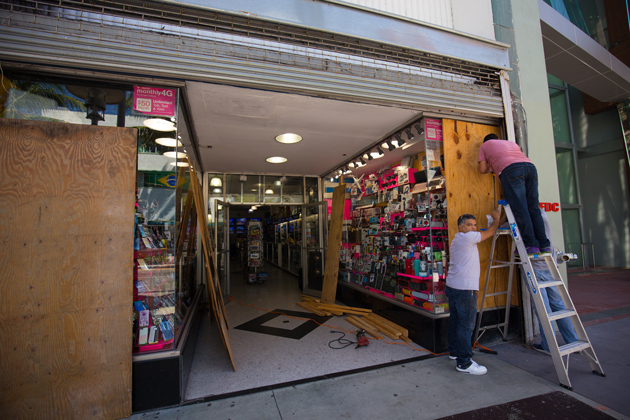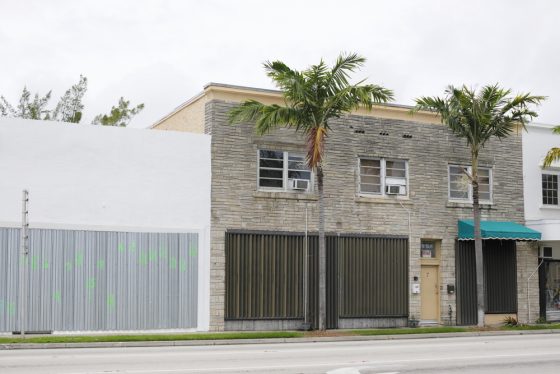The 2022 hurricane season may be nearing its end, but it is clearly not over just yet. With Tropical Storm Nicole approaching landfall and expected to reach the U.S. as a Category 1 hurricane, Florida residents are once again in storm preparation mode and in the coming days, they will be dealing with the storm’s impact. The aftermath of a hurricane presents many risks—while the storm may be over, the danger is not. Any storm that damages power lines, gas lines or electrical systems, puts you and your business at risk due to fire, electrocution or explosion.
Proceed With Caution
Even once we enter the recovery phase, it is important to take precautions in flooded areas. Never drive across flowing water; a few inches of water may cause you to lose control of your vehicle and as little as a foot of flowing water will carry away a small car. Similarly, avoid wading in floodwaters. They may be contaminated by agricultural or industrial chemicals, or hazardous agents. Remember that standing water can be dangerous as it may be electrically charged from underground or downed power lines.
Before entering a building that has suffered wind or flood damage, conduct a preliminary inspection to make sure it is stable. If there is extensive damage, have a professional engineer or architect certify that it is safe. A professional should also check the gas, water and electrical lines and appliances for damage.
When using a generator for building system power, be sure that the main circuit breaker is off and locked out prior to starting the generator and that there is no exposed electrical wiring or equipment. This will prevent inadvertent energizing of power lines or uninsulated circuitry and help protect utility line workers and building occupants from possible electrocution.
Rebuilding and Restoring
Damage to your business can have a dramatic and far-reaching impact, so it is best to be prepared for the worst. It is natural to want to get back to a storm-hit property as soon as possible, but a little extra caution can go a long way in these circumstances.
Once the property is deemed safe by local officials, specially trained recovery teams in appropriate personal protective equipment can help assess the damage and work with management to implement an action plan to safely get your business back up and running. It is important to photograph and document all damage and notify your insurance agent as soon as possible. Then you can proceed to make temporary repairs to protect the building and its contents.
Preparing for the Future
An average hurricane season produces 14 named storms, of which seven become hurricanes, and three become major hurricanes. Recovery is never a one-and-done proposition—there will always be other hurricanes and hurricane seasons. Regardless of whether or not you experienced damage this year, if your business is in a hurricane prone area, or has the potential for a hurricane, you need to put your hurricane preparedness plan into action by building your hurricane kits, gathering needed supplies, and training your employees in pre- and post-hurricane activities. Do not wait for the next storm to form, as, it becomes increasingly more difficult to acquire the necessary equipment and supplies for your location once a warning has been issued and a storm looming in the not-too-far distance.
NOAA’s main function is to monitor weather and distribute alerts and warnings. Since 2019, NOAA has been utilizing models that provide a more realistic expected arrival times for storms. Having the ability to better pinpoint a storm’s arrival enables businesses to better prepare their locations and their people for the impeding storm. This technology also helps to reduce loss-of-life and injury, in addition to the potential catastrophic financial impact a hurricane can have on a business.
The recovery period that storm-impacted Florida businesses are in following this year’s storms presents a great opportunity for learning. It is essential that organizations have a process in place to assess weaknesses and strengths in their hurricane readiness plan before the next event. What went well before, during and after the storm? What can be improved or implemented to address any unexpected challenges from this event?
If history has taught us anything, it is that a common thread across the responses to all natural disasters is a lack of awareness and preparation. As one of nature’s most destructive events, hurricanes are powerful and far-reaching, often causing dangerous storm surges that can be felt hundreds of miles inland. With potential maximum wind speeds of 200 mph and the ability to drop more than 2.4 trillion gallons of water in a single day, hurricanes are not to be taken lightly. By identifying areas of vulnerability and taking actions to prepare, businesses can potentially reduce the impacts of a catastrophic hurricane.


